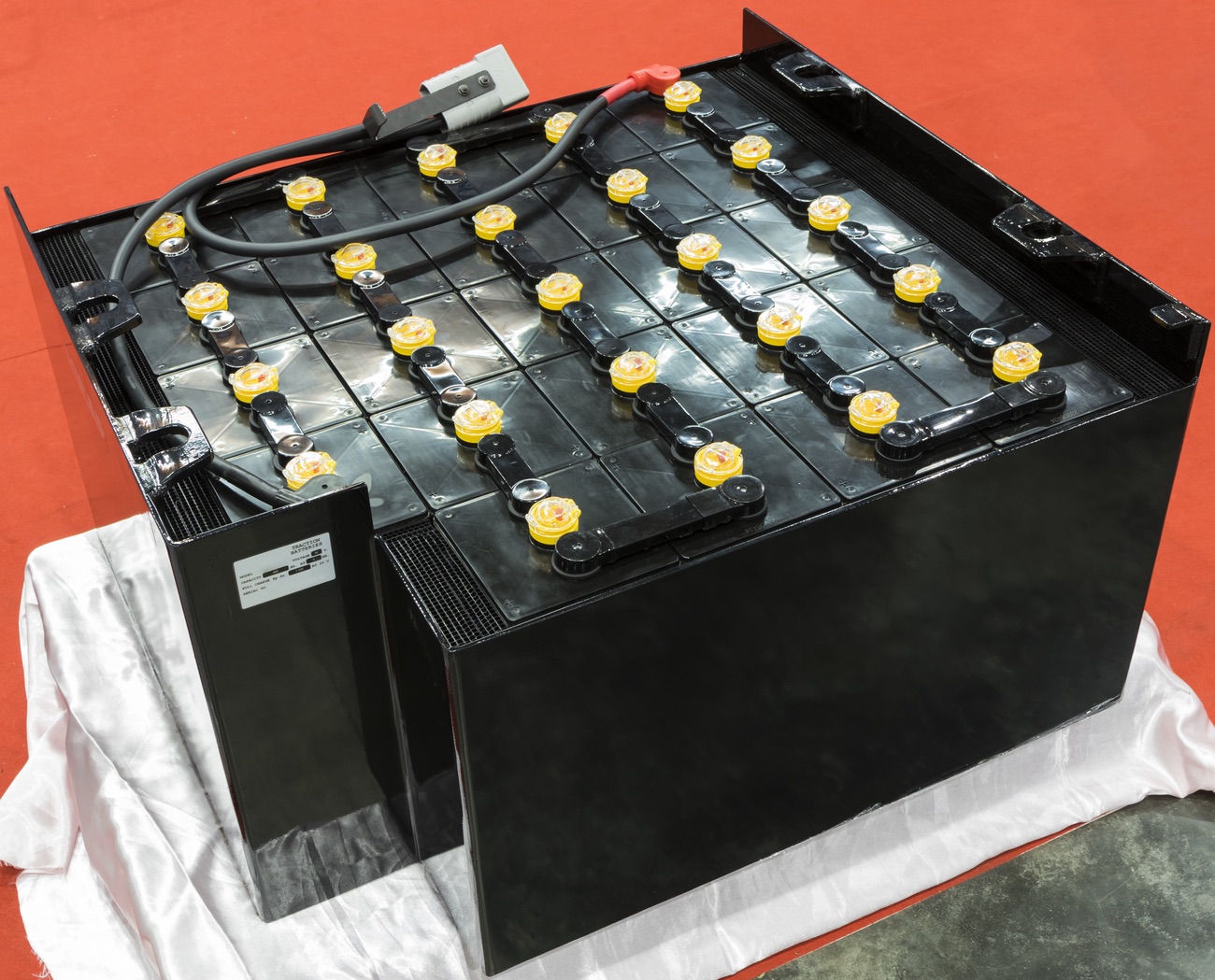Equipment Voltage Guide
Where do I find the voltage of my battery?
- Check on the side of the battery case for a model number and dimensions and provide us with model and a serial number of your electric forklift (to locate the Model and Serial of your forklift click here.)
- Look at the Battery case. The battery case houses the battery’s individual cells. The number of cells can range from six to 36, depending on the voltage. Voltage is usually 12, 24, 36 or 48 volts.

What is a forklift battery?
A forklift battery actually has two functions:
- The first function is to provide a power source to the forklift.
- The second function is to provide mass as a counterweight, which aids the forklift’s lifting capacity.
An industrial forklift battery is typically comprised of the following components:
- Battery case. The battery case houses the battery’s individual cells. The number of cells can range from six to 36, depending on the voltage. Voltage is usually 12, 24, 36 or 48 volts.
- Battery cells. The battery cells are essentially small, self-contained individual batteries made up of a series of tightly-stacked lead plates filled with sulfuric acid.
- Battery bars. The battery bars are large lead bars that link the individual cells, creating a complete circuit.
- Battery cables. These cables can vary in size from 4-gauge wire, which is roughly the diameter of a pencil, all the way up to 4/0 cable that can be more than an inch in diameter. Stout wiring is required in order to handle the high amperage some batteries can generate. Some batteries can have an amp hour rating of as much as 1,200 amps. A typical arc welder needs only 250-300 amps to melt and weld thick steel. You can see why large cables are critical to the operation.
